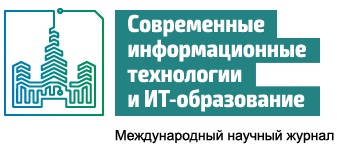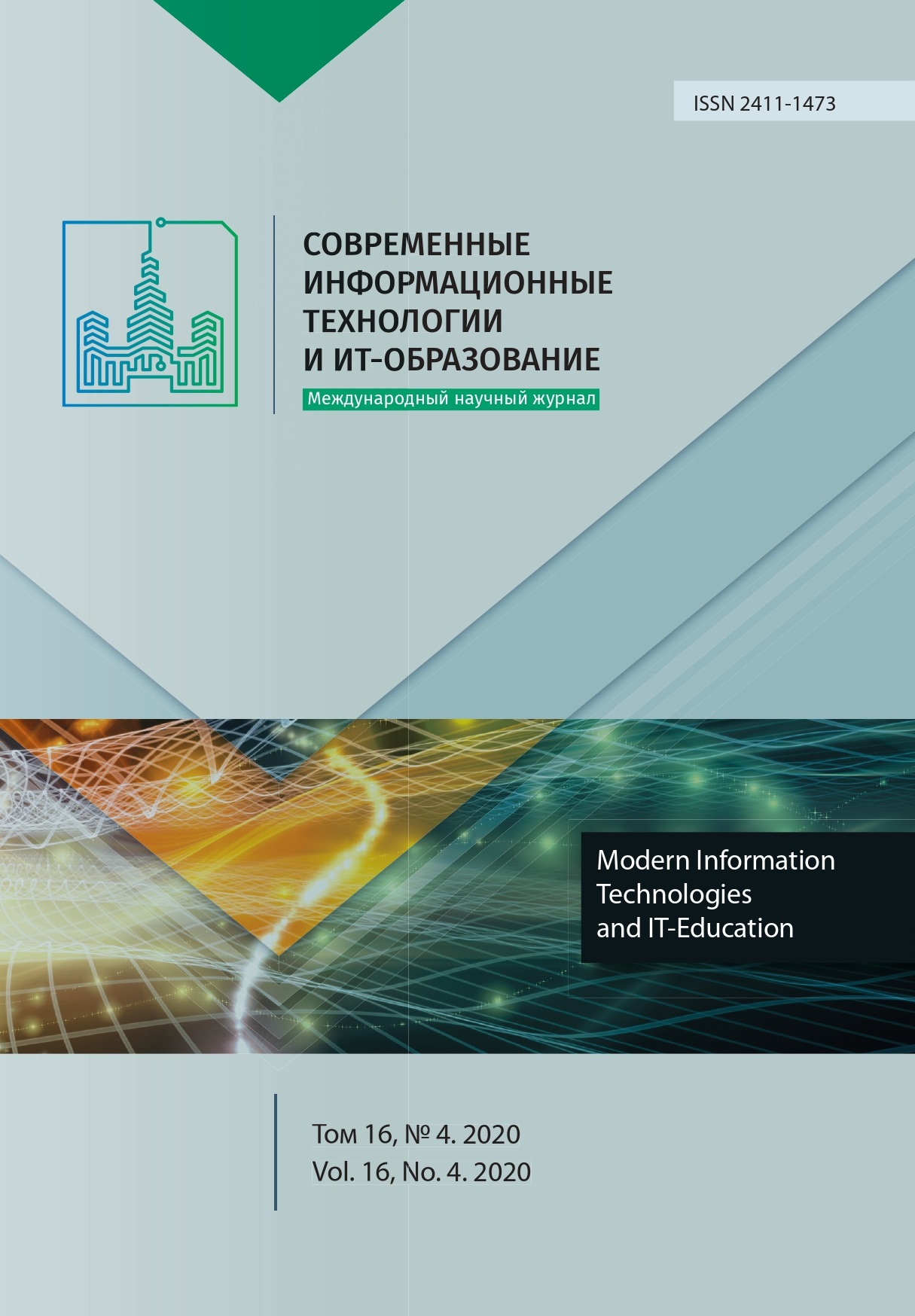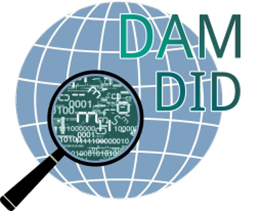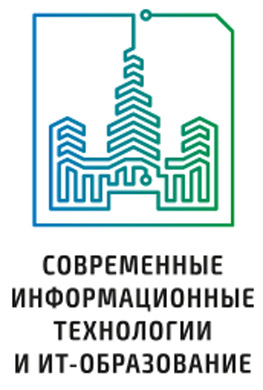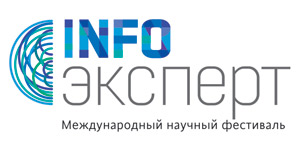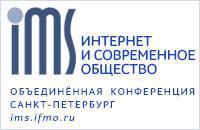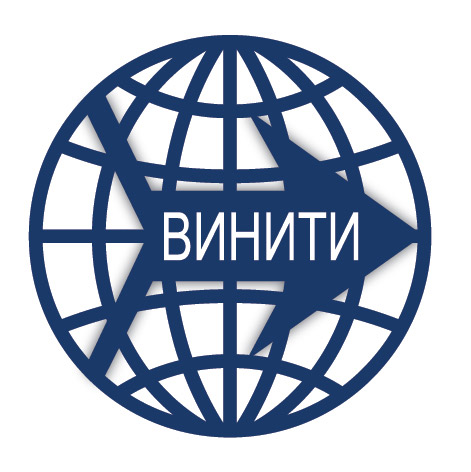Способ описания объектов сцены системы технического зрения робота средствами нечеткой триангуляции Делоне с использованием адаптивной сетки
Аннотация
В работе рассмотрен способ представления совокупности информационных объектов (сцены), находящихся в поле зрения интеллектуального робота, основанный на базе нечеткой триангуляции Делоне за счет локально-регулярного измельчения исходной (грубой) треугольной сетки при помощи многократного половинного деления сторон исходных треугольников и построения на его основе четырех конгруэнтных ему треугольников в четыре раза меньшей площади. Такой подход к измельчению позволяет строить регулярные, сетки и соответствующей триангуляции этих средних точек, состоящие как из равносторонних, так из произвольных треугольников, в зависимости от того, как распределены отдельные информационные объекты в пространстве исследуемой территории. Возникающая при этом проблема измельчения и перестроения приграничных треугольников упрощается за счет того, что процесс их разбиения осуществляется по аналогии со смежными исходными треугольниками. Описанный метод возможно модифицировать для того, чтобы измельчать уже готовую сетку как целиком, так и отдельные ее зоны. В этом случае пропускается этап построения грубой триангуляции и половинное деление проводится на материале уже готовой сетки. Тем самым отсутствует необходимость проверять на каждом шаге условие Делоне. При таком измельчении может происходить лишь локальное перестроение ячеек. Преимуществом такого подхода является отсутствие необходимости генерировать всю сетку заново. Заметим также, что рассмотренная процедура приведения триангуляции в соответствии с условием Делоне позволяет существенно уменьшить затрачиваемое на перестроение сетки машинное время, так как не производится проверка условия для всех элементов сетки. В процессе описания контекста исследуемого изображения определяются центры тяжести плоских информационных объектов, которые выступают в качестве исходных для грубого разбиения на треугольники по правилам Делоне. Предлагаемый подход позволяет существенно упростить вычислительные процедуры идентификации элементов нечетких изображений.
Литература
[2] Khramov V.V. Generacija modelej ob'ektov intellektual'nogo prostranstva. Teorija i ispol'zovanie dlja upravlenija slozhnymi sistemami [Generation of models of objects of intelligent space. Theory and use for managing complex systems]. In: Proceedings of the International Scientific and Practical Conference on Management in Social, Economic and Technical Systems. KUADI, Kislovodsk; 2000. p. 67-68. Available at: https://elibrary.ru/item.asp?id=32737843 (accessed 28.08.2020). (In Russ.)
[3] Krugljakova L.V., Neledova A.V., Tishkin V.F., Filatov A.Yu. Unstructured adaptive grids for mathematical physics problems (Review). Matematicheskoe modelirovanie = Mathematical Models and Computer Simulations. 1998; 10(3):93-116. (In Russ., abstract in Eng.)
[4] Popov I.V., Polyakov S.V. Construction of adaptive irregular triangular grids for 2D multiply connected nonconvex domains. Matematicheskoe modelirovanie = Mathematical Models and Computer Simulations. 2002; 14(6):25-35. (In Russ., abstract in Eng.)
[5] Popov I.V., Vikhrov E.V. Unstructured mesh generation method. Keldysh Institute Preprints. 2018; (237):1-15. (In Russ., abstract in Eng.) DOI: https://doi.org/10.20948/prepr-2018-237
[6] Skvortsov A.V. Delaunay triangulation and its application. Tomsk University Publ., Tomsk; 2002. (In Russ.) DOI: https://doi.org/10.17273/BOOK.2002.1
[7] Khramov V.V., Gvozdev D.S. Intelligent Information Systems: Data Mining. RSTU, Rostov-on-Don; 2012. Available at: https://elibrary.ru/item.asp?id=32762296 (accessed 28.08.2020). (In Russ., abstract in Eng.)
[8] Bandman O.L. Cellular-Automata Models of Spatial Dynamics. System Informatics. 2006; (10):59-111. (In Russ., abstract in Eng.)
[9] Akperov G.I., Khramov V.V. A Fuzzy Semantic Data Triangulation Method Used in the Formation of Economic Clusters in Southern Russia. In: Aliev R., Kacprzyk J., Pedrycz W., Jamshidi M., Babanli M., Sadikoglu F. (ed.) 10th International Conference on Theory and Application of Soft Computing, Computing with Words and Perceptions - ICSCCW-2019. ICSCCW 2019. Advances in Intelligent Systems and Computing. 2020; 1095:340-344. Springer, Cham. (In Eng.) DOI: https://doi.org/10.1007/978-3-030-35249-3_43
[10] Akperov I.G., Khramov V.V. The Concept of a Unified Geo-informational Space of the Region: Ecological Aspect. In: E3S Web of Conferences. VIII International Scientific and Practical Conference "Innovative technologies in science and education" (ITSE 2020). 2020; 210:09006. (In Eng.) DOI: https://doi.org/10.1051/e3sconf/202021009006
[11] Mayorov V.D., Khramov V.V. Heuristic ways of contour coding of models of information objects in robot vision. Vestnik Rostovskogo Gosudarstvennogo Universiteta Putej Soobshcheniya. 2014; (1):62-69. Available at: https://elibrary.ru/item.asp?id=21391925 (accessed 28.08.2020). (In Russ., abstract in Eng.)
[12] Wolfram S. A New Kind of Science. Champaign, Ill., USA: Wolfram Media Inc.; 2002. (In Eng.)
[13] Evseev A.A., Nechaeva O.I. Cellular automata simulation on surface triangulation for diffusion processes. Applied Discrete Mathematics. 2009; (4):72-83. Available at: https://www.elibrary.ru/item.asp?id=13091804 (accessed 28.08.2020). (In Russ., abstract in Eng.)
[14] Zhao R., Chen Y., Lee W.S. A Face Changing Animation Framework Based on Landmark Mapping. In: Zhao P., Ye Z., Xu M., Yang L., Zhang L., Zhu R. (ed.) Advances in Graphic Communication, Printing and Packaging Technology and Materials. Lecture Notes in Electrical Engineering. 2021; 754:193-198. Springer, Singapore. (In Eng.) DOI: https://doi.org/10.1007/978-981-16-0503-1_29
[15] Crownover R.M. Introduction to Fractals and Chaos. First ed. Jones & Bartlett, Boston; 1995. (In Eng.)
[16] Kramarov S.O., I.O. Temkin, V.V. Khramov, Grebenyuk E.V., Mityasova O.Yu. Analysis of data from satellite monitoring of the earth's surface based on the principles of System of Systems. In: Conference Proceedings on Current Problems in Remote Sensing of the Earth from Space. IKI, Moscow; 2020. p. 86. (In Russ.)
[17] Khramov V.V., Kramarov S.O., Roshchupkin S.A. The Concept of Functional Connectivity of Measurements of Geo-Informational Space of the Region. Sovremennye informacionnye tehnologii i IT-obrazovanie = Modern Information Technologies and IT-Education. 2020; 16(2):407-415. (In Eng.) DOI: https://doi.org/10.25559/SITITO.16.202002.407-415
[18] Kramarov S., Temkin I., Khramov V. The principles of formation of united geo-informational space based on fuzzy triangulation. Procedia Computer Science. 2017; 120:835-843. (In Eng.) DOI: https://doi.org/10.1016/j.procs.2017.11.315
[19] Akperov I.G., Khramov V.V. Soft models for assessing the state of information ecology of the unified geoinformation space of a region. In: Conference Proceedings on Innovative technologies in science and education ("ITNO 2020"). DSTU Print, Rostov-on-Don; 2020. p. 29-33. (In Russ., abstract in Eng.) DOI: https://doi.org/10.23947/itno.2020.29-33
[20] Akperov I.G., Khramov V.V. Contour identification in the concept of TIN-models of the university information marketing space. In: Proceedings of the International Scientific and Practical Conference on "Transport: Science, Education, Production". RSTU, Rostov-on-Don; 2020. p. 16-20. Available at: https://www.elibrary.ru/item.asp?id=44058350 (accessed 28.08.2020). (In Russ., abstract in Eng.)
[21] Miklós L. et al. Construction and Mapping of Geocomplexes. In: Landscape as a Geosystem. Springer, Cham; 2019. p. 43-84. (In Eng.) DOI: https://doi.org/10.1007/978-3-319-94024-3_3
[22] Akperov G.I.O., Alekperov I.D.O. Intelligent Information Systems in the Digital Economy Era. IMBL, Rostov-on-Don; 2020. Available at: https://www.elibrary.ru/item.asp?id=43829920 (accessed 28.08.2020). (In Russ.)
[23] Kramarov S., Khramov V. Methodology of Formation of Unite Geo-Informational Space in the Region. In: Sukhomlin V., Zubareva E. (ed.) Modern Information Technology and IT Education. SITITO 2018. Communications in Computer and Information Science. 2020; 1201:309-316. Springer, Cham. (In Eng.) DOI: https://doi.org/10.1007/978-3-030-46895-8_24
[24] Kramarov S., Khramov V., Bezuevskaya V. Fuzzy Models of Educational Process Management: Digital Transformation. In: Sukhomlin V., Zubareva E. (ed.) Modern Information Technology and IT Education. SITITO 2018. Communications in Computer and Information Science. 2020; 1201:78-85. Springer, Cham. (In Eng.) DOI: https://doi.org/10.1007/978-3-030-46895-8_6
[25] Lindenbaum, T.M. Vvedenie v informacionnuju jekologiju: tehnologicheskie predposylki [Introduction to Information Ecology: technological prerequisites]. In: Proceedings of the International Scientific and Practical Conference on "Actual Problems and Prospects for the Development of Transport, Industry and Economy in Russia". RSTU, Rostov-on-Don; 2020. p. 136-140. (In Russ.)

Это произведение доступно по лицензии Creative Commons «Attribution» («Атрибуция») 4.0 Всемирная.
Редакционная политика журнала основывается на традиционных этических принципах российской научной периодики и строится с учетом этических норм работы редакторов и издателей, закрепленных в Кодексе поведения и руководящих принципах наилучшей практики для редактора журнала (Code of Conduct and Best Practice Guidelines for Journal Editors) и Кодексе поведения для издателя журнала (Code of Conduct for Journal Publishers), разработанных Комитетом по публикационной этике - Committee on Publication Ethics (COPE). В процессе издательской деятельности редколлегия журнала руководствуется международными правилами охраны авторского права, нормами действующего законодательства РФ, международными издательскими стандартами и обязательной ссылке на первоисточник.
Журнал позволяет авторам сохранять авторское право без ограничений. Журнал позволяет авторам сохранить права на публикацию без ограничений.
Издательская политика в области авторского права и архивирования определяются «зеленым цветом» в базе данных SHERPA/RoMEO.
Все статьи распространяются на условиях лицензии Creative Commons «Attribution» («Атрибуция») 4.0 Всемирная, которая позволяет другим использовать, распространять, дополнять эту работу с обязательной ссылкой на оригинальную работу и публикацию в этом журналe.
